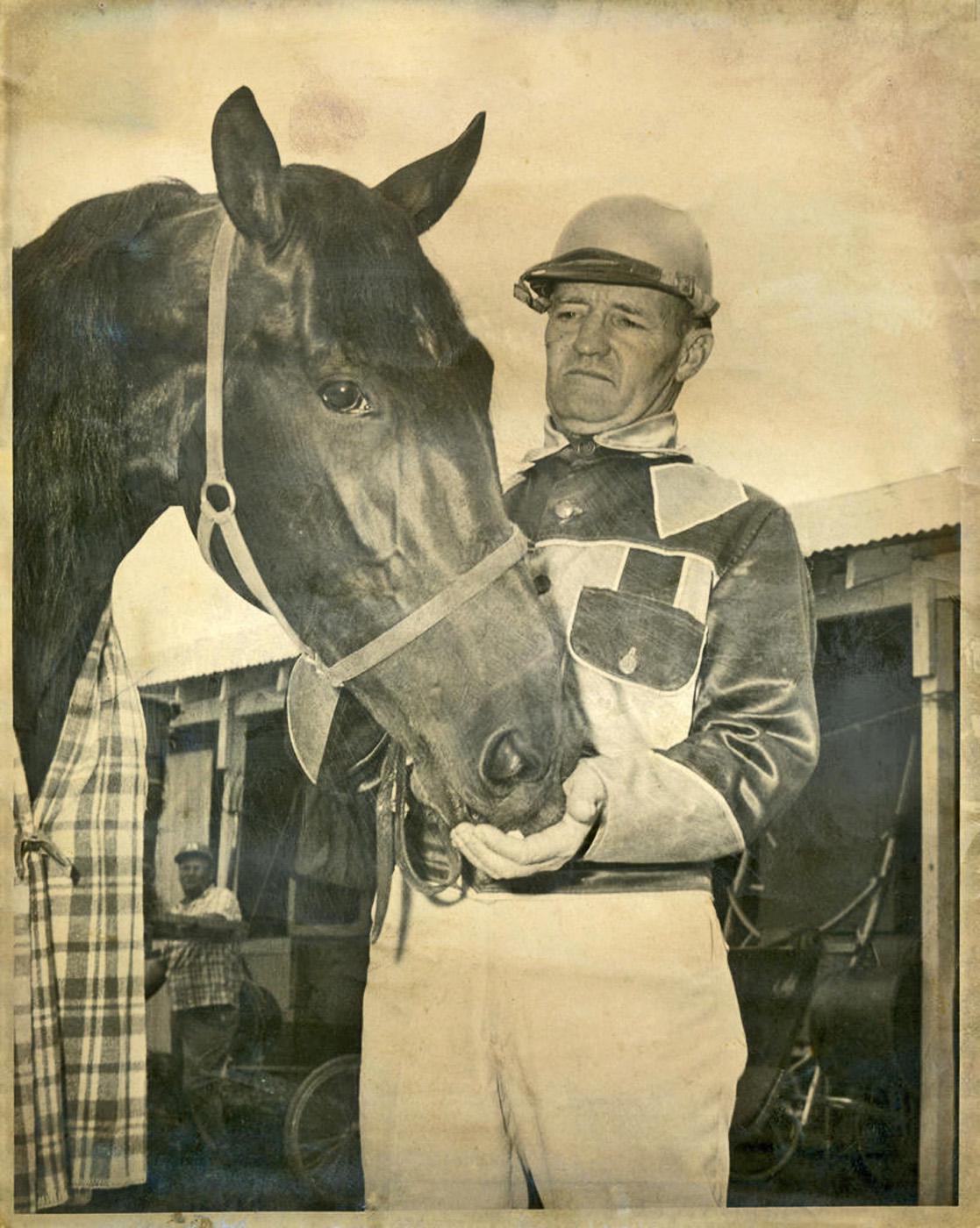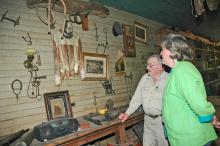Information Possibly Outdated
The information presented on this page was originally released on June 4, 2009. It may not be outdated, but please search our site for more current information. If you plan to quote or reference this information in a publication, please check with the Extension specialist or author before proceeding.
Tall tales unite MSU graduates
MISSISSIPPI STATE -- Tom Wilburn’s memories of growing up on an east Mississippi plantation, attending Mississippi State College and plunging headlong into the harness racing industry are the types of tales Jeannine Smith is eager to record.
United by a common passion for local history, these two graduates of Mississippi State University spent a lifetime together in two years. Smith, who received her master’s degree from MSU in industrial technology in 1995 and a doctorate in education in 2001, began researching for a book on Artesia, her adopted hometown, in 2005.
“Every time I asked someone about the history of Artesia, they would tell me I needed to talk to Tom Wilburn,” Smith said. “So I started going to see him whenever I found a newspaper article that needed more explanation.”
With his help, Smith now knows more about the Lowndes County town than her hometown of French Camp. In fact, she probably knows more about Artesia than most of its natives.
After a few of those fact-finding visits, Wilburn called Smith with his own request. A decade earlier, his brother had encouraged him to begin tape recording “family tales” and other stories for posterity. With nearly 20 hours of tape, he needed help to make it into a book. For the next six to eight months, Smith and Wilburn spent several hours together most Saturdays while he told his tales.
The book, “Tales of Tom Wilburn,” compiles personal stories and photos of life in Mississippi’s prairie land and of the early days of harness-horse racing across the United States and Mexico. Set largely in the first half of the 20th century, Smith and Wilburn record insights into the events and challenges of a member of one of Lowndes County’s oldest families. Wilburn’s family settled Smith Oaks Plantation in 1837.
“I firmly believe in the old proverb that states, ‘When an old man dies, a library burns to the ground,’” Smith said. “Mr. Wilburn has a rare gift for storytelling and a remarkable memory. I’m glad we were able to work together to record them in a book.”
The oral history takes readers from Wilburn’s initial efforts to manage the family land shortly after he graduated in 1940 from Mississippi State College, now MSU, through the career decisions that took him in his great-uncle’s footsteps as a harness-horse trainer. They include stories that earned him a place in the Illinois Harness Racing Hall of Fame, and his “tales” passed down from Civil War veterans and prairie residents from the late 1800s.
After initially attending Mississippi State, Wilburn briefly attended West Point Military Academy before returning to the state college in 1936. His parents believed strongly in higher education, and they hoped a degree in animal husbandry would help their son make a living on the family farm. But his eyes twinkle as he reflects on his college memories in what he described as a “joyful period” of his life.
“I learned survival,” he said. “Upperclassmen were really tough on freshmen. We tried to avoid them, and when we couldn’t, we tried to come up with ways to retaliate.”
One of Wilburn’s first paying jobs was picking sweet potatoes on the college’s north farm for 35 cents an hour. The best jobs were working in the cafeteria. After graduation, the struggle to make ends meet on the farm caused him to feel a tug in a different direction from raising cattle on the family farm. Harness racing offered, he thought, a better return on his effort.
“Having a college education helped me when I got into the harness racing business. I knew how to meet and talk to a variety of people,” he said. “But even in the harness business, like in college, when you start out, you entered on the bottom of the pile.”
Success came slowly for Wilburn’s stables, but it came.
“In 1940, I was the only harness racer in Mississippi, and it stayed that way for about 10 years,” Wilburn said. “By 1952, we were starting to get recognition in the industry. The racing money helped keep the farm in business.”
Through the 1960s and into the early 1970s, Wilburn would host a free, harness-racing event on Smith Oaks Plantation in an effort to give back to the community he loved. He estimated as many as 5,000 people would attend at the peak of the annual event’s popularity.
Smith is also motivated by a love for the community. She brakes her car as she turns onto Smith Oaks Plantation and again as she tours the city streets of Artesia to draw attention to a point of interest.
“When I look around, I don’t see what’s here now; I see what was,” she said. “I hope people read Tom’s tales and get a glimpse into our past and the history of this area.”
Smith wants the book to serve as a sort of time capsule for future generations.
“Time capsules help people look back on what was going on at a particular time that no longer exists. The collections also reflect a desire by one generation to be remembered by a future generation,” Smith said.
Contact: Dr. Jeannine Smith (662) 325-2993





